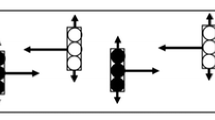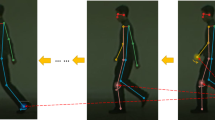Abstract
The gait recognition is to recognize an individual based on the characteristics extracted from the gait image sequence. There are many researches for the gait recognition which use diverse kinds of information such as shape of gait silhouette, motion variation caused by walking, and so on. In general, shape information is more useful for recognition. However, shape information is influenced by a variety of factors, which degrade the recognition performance. Moreover, the information used in most of those studies might be able to be extracted after all of one or more sequences of the gait cycle are known. And it is also hard to discriminate the gait cycle from given gait sequences exactly by the online approach. In regard to these difficulties, we propose a novel gait recognition method based on the multilinear tensor analysis. To recognize the cyclic characteristic of gait without an exact division for the gait cycle, this paper’s propose is the method to form the accumulated silhouette and then describes those as the tensor. For the accumulated silhouette proposed by this paper, the image sequence of one gait cycle is divided into four sections in the training phase. However, discrimination for the gait cycle in the training phase is not directly related to the recognition phase, thus the online approach is possible. We first form the accumulated silhouettes for every individual using gait silhouettes within each section. And then, we represent these accumulated silhouettes as the tensor. Using a multilinear tensor analysis, we compute the core tensor which governs the interaction between factors organizing the original tensor, and then compose the basis to recognize the individual in the online recognition framework. Finally, we recognize the individual using the computation of similarity based on the Euclidean distance, which is more suitable to our method. We verify the superiority of the proposed approach via experiments with real gait sequences.











Similar content being viewed by others
References
Niyogi S, Adelson E (1994) Analyzing gait with spatiotemporal surfaces. In: Proc IEEE workshop non-rigid motion, pp 24–29
Murray MP, Drought AB, Kory RC (1964) Walking patterns of normal men. J Bone Jt Surg 46-A(2):335–360
Murray MP (1967) Gait as a total pattern of movement. Am J Phys Med 46(1):290–332
Cunado D, Nash JM, Nixon MS, Carter JN (1999) Gait extraction and description by evidence-gathering. In: Proc int’l conf AVBPA, pp 43–48
Boyd JE (2004) Synchronization of oscillations for machine perception of gaits. Comput Vis Image Underst 96:35–59
Nixon MS, Carter JN (2004) Advances in automatic gait recognition. In: Proc int’l conf automatic face and gesture recognition, pp 139–146
Little JJ, Boyd JE (1998) Recognizing people by their gait: the shape of motion. J Comput Vis Res, pp 2–32
BenAbdelkader C, Cutler R (2002) View-invariant estimation of height and stride for gait recognition. In: Proc ECCV workshop on biometric authentication, pp 155–167
Yoo JH, Nixon MS, Harris CJ (2002) Extracting human gait signatures by body segment properties. In: Proc IEEE southwest symposium on image analysis and interpretation, pp 35–39
Jeong S, Kim S-S, Choi B-U (2007) Canonical view synthesis for gait recognition. In: Proc frontiers in the convergence of bioscience and information technologies, pp 734–739
Lee L, Grimson WEL (2002) Gait appearance for recognition. In: Proc ECCV workshop. Biometric authentication, pp 143–154
Lee L, Grimson WEL (2002) Gait analysis for recognition and classification. In: Proc IEEE conf face and gesture recognition, pp 155–161
Collins RT, Gross R, Shi J (2002) Silhouette-based human identification from body shape and gait. In: Proc 5th IEEE int’l conf automatic face and gesture recognition, pp 351–356
Tanawongsuwan R, Bobick A (2003) Performance analysis of time-distance gait parameters under different speeds. In: Proc int’l conf audio and video-based biometric person authentication, pp 715–724
Vasilescu MAO, Terzopoulos D (2002) Multilinear analysis of image ensembles: tenssorfaces. In: Proc European conf computer vision, pp 447–460
Vasilescu MAO, Terzopoulos D (2007) Multilinear projection for appearance-based recognition in the tensor framework. In: Proc ICCV, pp 1–8
Dunlavy DM, Kolda TG, Kegelmeyer WP (2006) Multilinear algebra for analyzing data with multiple linages. Tech report, SAND2006-2079
Author information
Authors and Affiliations
Corresponding author
Rights and permissions
About this article
Cite this article
Jeong, S., Cho, J. A framework for online gait recognition based on multilinear tensor analysis. J Supercomput 65, 106–121 (2013). https://doi.org/10.1007/s11227-012-0785-7
Published:
Issue Date:
DOI: https://doi.org/10.1007/s11227-012-0785-7




